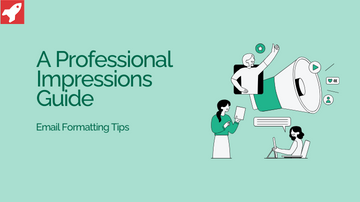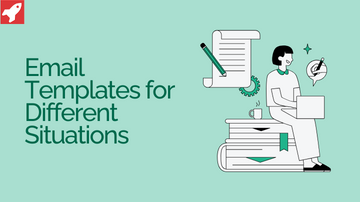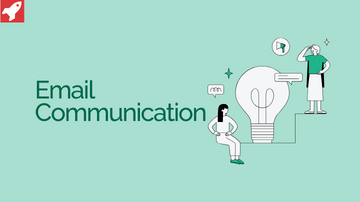Introduction
In the digital year 2024, email is a cornerstone of professional communication of all types.
It is a professional requirement that your emails are more than actionable and informative. Your emails should be well-structured and easy to digest for your potential recipients.
Irrespective of whether you’re reaching out for business, networking, or simply chatting with a colleague, How to Format an Email can show volumes about your professionalism.
Let’s dive into the art of email formatting and explore templates that can get you greater results and streamline your communication methods with a professional tone and results.
Email Formatting Tips: A Professional Impressions Guide
The journey of an email starts even before the recipient opens the message. The way your email is formatted can impact how it’s perceived. Here are foundational tips for crafting emails that are used for immediate credibility and inviting:
Use a Professional Email Address
Your email address is your digital identity in this era. Ensure it reflects professionalism, ideally using a combination of your first and last name or job title when emailing peers or clients. Personal email addresses or those with nicknames might not convey the right impression professionally.
Write a Clear and Concise Subject Line
The subject line is your first opportunity to engage with the reader. Your subject line has to be clear, concise, and relevant to the content of your email. Avoid deceptive click-bait or vague allusions, as they can lead to misunderstanding or neglect of your email.
Use a Proper Salutation and Greeting
How you address your recipient sets the tone for the entire email. Formally address recipients, particularly if emailing someone you don’t know well. “Dear [Name]” works for formal settings, while “Hi [Name]” or “Hello [Name]” can be friendlier without crossing a line in casual or familiar professional settings.
Organize with Paragraphs and Bullet Points
Ensure your email has a logical flow using paragraphs to separate different parts of your message. For different parts like information or lists, bullet points can make your message scannable and easier to follow. Remember to keep paragraphs and bullet points of a reasonable length to convey your message.
Use Professional Closings and Signature
Conclude your email with a professional closing that matches the tone of the email. “Best regards,” “Sincerely,” or “Thank you” are all formal and widely accepted. A signature at the end of your email with your full name, job title, and contact information reflects your clarity and a sense of formality.
Email Templates for Different Situations
Writing your email to suit the context can significantly enhance engagement and response rates. Here are some can’t-miss templates for common emailing scenarios:
Introduction Emails
Making a new connection? An introduction email is your ticket to an excellent first impression. It should be concise, friendly, and focused on how the introduction will benefit both the recipient and the person being introduced.
Subject: Introduction: Connecting Two Peers in [Field/Industry]
Dear [Recipient’s Name],
I trust this message finds you well. I am delighted to facilitate an introduction between you and [Mutual Contact’s Name], given your similar passions for [common interest or industry]. I believe a conversation between you could lead to fruitful collaborations or insightful discussions on our shared interests.
Best regards,
[Your Name]
Follow-up Emails
After a meeting or event, a follow-up email shows your appreciation and reiterates the main points or decisions. It’s another chance to strengthen a connection or partnership.
Subject: Reconnecting after Our Productive Discussion
Dear [Recipient’s Name],
Thank you for our resourceful conversation earlier today. I can’t wait to learn more about the concepts we covered and comprehend the possible directions we indicated for further research. Your advice is helpful, and I sincerely look forward to our collaboration.
Warm regards,
[Your Name]
Thank-You Emails
Never undervalue the significance of a straightforward “thank you.” After a favor, interview, or expert assistance, sending a thank-you email is a kind approach to express your appreciation and make sure the person remembers you.
Subject: Appreciation for Your Assistance
Dear [Recipient’s Name],
I’m writing to thank you very much for helping me with [particular task/action]. Your assistance has been invaluable, and I appreciate it. I hope to have the opportunity to return the favor or support your future projects.
Best wishes,
[Your Name]
Job Application Emails
Your job application email is your first sample of professional communication with a potential employer. It should be drafted to the job description, exhibit enthusiasm, and include all the necessary attachments, such as your resume and cover letter.
Subject: Application for [Job Title] – [Your Name]
Dear Hiring Manager,
Applying for the [Job Title] position at [Company Name], as posted on [platform/source], is why I’m writing. Having a solid foundation in [relevant experience/qualification], I’m excited to contribute my abilities to your team. My cover letter and résumé, which highlight my industry experience and desire to help [Company Name], are included.
I value your thoughts and time and look forward to speaking with you further about this wonderful opportunity.
Warm regards,
[Your Name]
Best Practices for Email Communication
Beyond formatting, several other elements contribute to successful email communication. Let us read these practices to ensure your emails are not just well organized but also effective in conveying your message:
1. Be Mindful of Tone and Language
Your tone in email should always be professional and courteous. Avoid sarcasm or humor that could be misinterpreted. Similarly, be aware of cultural differences, which may affect the perception of certain phrases or expressions.
2. Use Appropriate Formatting for Attachments and Links
When including attachments, mention them in the body of your email and make it easy for the recipient to know each one. For links, hyperlink the text clearly, indicating where each link leads.
3. Double-check for Spelling and Grammar Errors
A well-crafted message loses its impact when riddled with typos and errors. Utilize spelling and grammar checkers, read your email aloud, or have a colleague review it for accuracy before hitting ‘send.’
4. Avoid Excessive Capitalization or Emojis
Overusing capital letters can come across as shouting, while emojis might only be suitable for some professional contexts. Use them sparingly, if at all, and reserve them for more informal emails with established contacts.
Investing time in perfecting your email format and content is an investment in your professional image and the clarity of your communication.
8 Email Template Topics For All The Use.
Do you need an email for a specific occasion? We’ve got you covered with ready-to-use templates:
- Networking – To expand your professional network, use a template that seeks a brief meeting or phone call to discuss mutual interests and opportunities.
- Scheduling a Meeting – When coordinating schedules, your email should be clear, offering multiple time slots and confirming the agreed time swiftly.
- Customer Service Response – Replying to a customer inquiry or complaint requires empathy and the clear provision of solutions or next steps.
- Event Invitation – Crafting an engaging and informative event invitation can increase attendance by appealingly delivering all relevant details.
- Request for Information or Assistance – When seeking help or information, your email should clearly state the nature of your request and express appreciation for the recipient’s time and knowledge.
- Memorandum – Professional announcements or updates within a team or organization should use a standardized memorandum format with a clear heading and structured content.
- Conflict Resolution Email – In addressing conflicts, diplomacy, and a neutral tone can diffuse tensions and lead to productive solutions.
- Positive News or Milestone Announcement – Sharing good news professionally maintains a positive image of your successes and milestones.
Master the Art of Email Formatting
In modern business, communicating via email effectively and efficiently is essential. Creating professionally designed, engaging, and well-written emails will make you stand out in a congested inbox. Remember that every email you send represents you and your company, so make sure your emails are always of the highest caliber by using these templates and advice.
As you embrace these email formatting tips and templates, always keep the recipient at the forefront. Successful emails consider the reader’s time and priorities, offering value and clarity in every message. Happy formatting and happy emailing!





